With the centenary of World War I (1914–1918) upon us, I thought it might be a good idea to take a look at The Great War, July 1, 1916 by Joe Sacco, a book published in 2013 with a unique take on that war.
Graphic artist Joe Sacco was born in Malta in 1960. His family moved to Melbourne, Australia, where they lived until Joe was 12. His schooling in Australia exposed him to the annual ANZAC day celebrations every 25 April and left an enduring imprint on him with regard to the significance of the Great War. The brutality of war is a recurring theme in his work: he has previously won acclaim for his ground-breaking non-fiction graphic serial Palestine (1993–95), based on his experiences travelling in the volatile region of the West Bank and Gaza Strip.
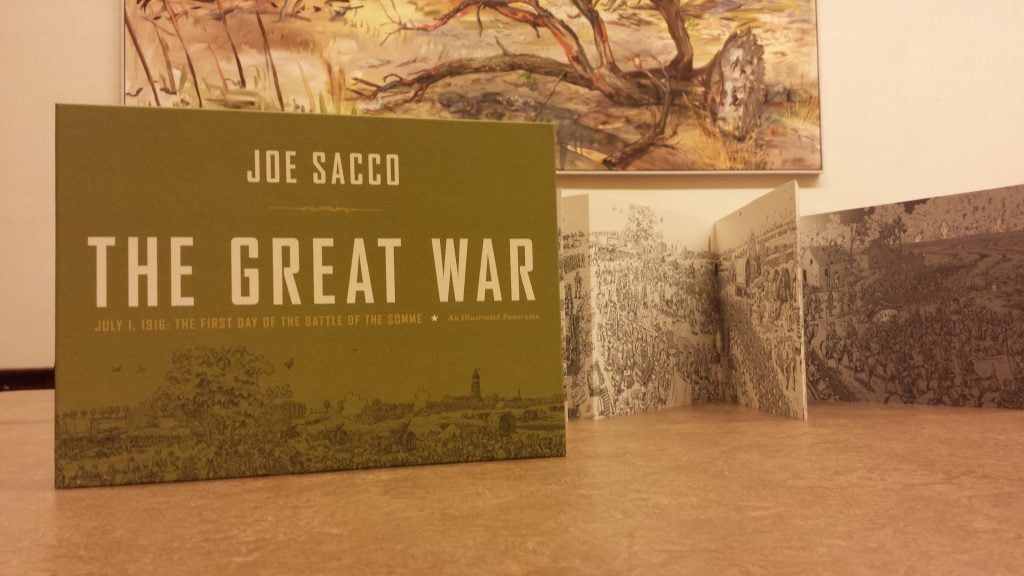
The Great War, July 1, 1916, the first day of the Battle of the Somme: An illustrated panorama by Joe Sacco, with an essay by Adam Hochschild (New York, W.W. Norton & Company, 2013)
Instead of trying to explain the entirety of this gargantuan conflict in one volume, Joe Sacco has preferred to focus on the first day of the Battle of the Somme as representative of the wider war. This day saw the British Army experience the single bloodiest day in its entire history, with close to 60,000 casualties, as Lord Kitchener’s inexperienced new recruits came face to face with the brutal realities of modern warfare’s industrialised killing.
The book itself comes in two parts. The main work is a 7.3-metre, 25-leaf continuous panorama beginning with preparations for the battle, including the British Commander, General Haig, taking his daily stroll around the château he was using as his personal headquarters, and the masses of men and equipment being moved into position for the upcoming offensive.
The extraordinary level of detail showing the British Tommies being fed and equipped conveys so much information without a single word of print. The panorama rolls seamlessly into the night as the huge attacking force moves into position amid the massive seven day artillery barrage by the British Royal Artillery that consumed over 1.7 million shells. Unfortunately a full quarter of those shells failed to explode due to defective manufacturing and two-thirds of them were shrapnel shells rather than the high explosive shells that were needed to dig the German defenders out of their deep reinforced bunkers and to cut the extensive rows of barbed wire rolls that blocked access to the German positions.
When the preparatory barrage lifted and the British troops advanced from their trenches into no-man’s land, the German troops rose from their dug-outs to man their machine guns and call down their own artillery fire, which then mowed down the waves of attacking troops stranded in no-man’s land in front of the frequently uncut wire. The British casualties on this first day alone were 57,470, with 19,240 dead, making this the bloodiest day’s fighting in British military history. Few gains made along the front for these excessive casualties. Even by the standards of the day, it had been a disaster.
The second part of the book is a 16-page booklet featuring the author’s notes, acknowledgements and annotations of the main panorama detailing the salient features and their relevance. There is also a short history of the battle by writer Adam Hochschild.
Despite the massive casualties of the first days fighting that are depicted in this book, General Haig refused to admit failure and continued to launch a series of assaults. His objectives changed: originally Haig sought a decisive blow against the Kaisers’ armies, but after the disastrous fist day, he reconceived the confrontation as a continuous battle of attrition, wearing down the Germans and forcing them to send the majority of their troops to the Somme rather than fighting against the French at the Battle of Verdun.
The Somme offensive continued for over four and a half months, until the deteriorating weather forced an end to the battle by the mutually exhausted troops of both sides on the 19 November 1916. Total casualties were 419,654 for the British Commonwealth, 204,253 for France and 465,000 for Germany. The allies had gained approximately 12 kilometres of ground for their troubles. The massive attrition caused to both sides did, however, succeed in drawing German troops away Verdun, which had been a major allied objective.
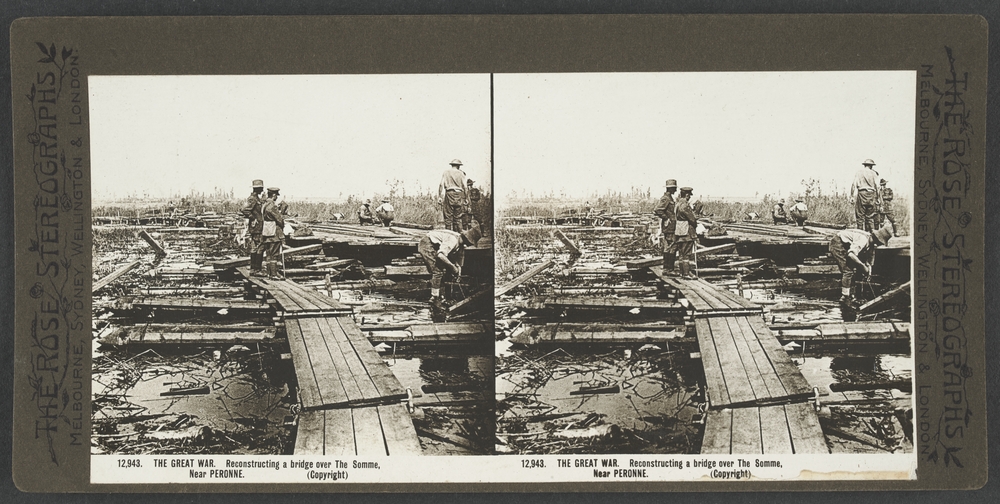
Reconstructing a bridge over The Somme, near Perone, 1916, H2007.38/16
In addition to the horrendous casualties that it produced (especially on that first day), the Battle of the Somme is notable for the first use of tanks in warfare, introduced by General Haig on 15 September 1916 in a desperate attempt to break open the battle. Despite encouraging early results, the technology was too immature and numerous breakdowns, along with poor coordination with the supporting infantry, prevented successful exploitation of the initial successes.
The Battle of the Somme was very much a multi-national affair with the allied side composed of troops from France and the British Isles, along with men from all over the British Empire, including Australia, New Zealand, Canada and India.
Australian troops joined the fighting on 23 July 1916 with an assault on the Bavarian defenders of the Pozières Heights, a set of formidable defences around the ruins of the town of Pozières. For the next 42 days the first, second and third Australian Divisions were rotated through the Pozières sector and while they did indeed take the town and the famous windmill on the Pozières Heights, they incurred 23,000 casualties including 6,800 dead, winning five Victoria Crosses in the process.

Battlefields and views of soldiers in France during World War I, 1914-8, H84.205/57
Looking through the books held in State Library Victoria regarding the Battle of the Somme, it is interesting to see the changes in how the battle has been presented to readers over the years. The earliest of these books were published whilst the war was still raging and due to the Empire’s censors and the public’s wartime sensibilities, the tone of these works suggested that the battle and its losses were an unfortunate necessity in the bigger battle to save civilisation. Later generations were less restrained in their criticism of the generals’ planning and conduct.
Soldiers’ accounts of WWI increased in popularity throughout the 1920s. One of the most famous (fictionalised) books about the Somme is that by Sydney-born Frederick Manning, first published anonymously as The Middle Parts of Fortune: Somme & Ancre, 1916 (1929) and shortly afterwards under his own name as Her Privates We, by Private 19022 (1930). Both versions of the title of Manning’s acclaimed fictionalised war memoir are drawn from ribald word-play in William Shakespeare’s Hamlet (1603), in which characters bemoan that they live in the ‘private, middle parts’ of Lady Fortune; that is, somewhere in between the good and bad luck personified by her head and feet, respectively. Written in soldiers’ vernacular, the novel’s realism subverts society’s narrative of the ‘heroic warrior’, emphasising the crudity of war.
The Library holds many books on this topic, from grand strategic overviews down to individual memoirs, visual records, photographic accounts, along with trench maps and extensive manuscript holdings, including many original letters and diaries written by individual Australian soldiers who recorded – and struggled to understand – the horrors of the epic battles unfolding around them.
To see some of the Library’s material about the Somme, visit the special WWI centenary display within the Changing Face of Victoria exhibition (Dome Gallery Level 5, 10am-5pm daily, free). This year, material on display includes items from the papers of Brigadier Walter Cass and his wife Helena, and Lieutenant Eric Chinner, who died of his wounds on 17 July 1916.
Lest we forget.

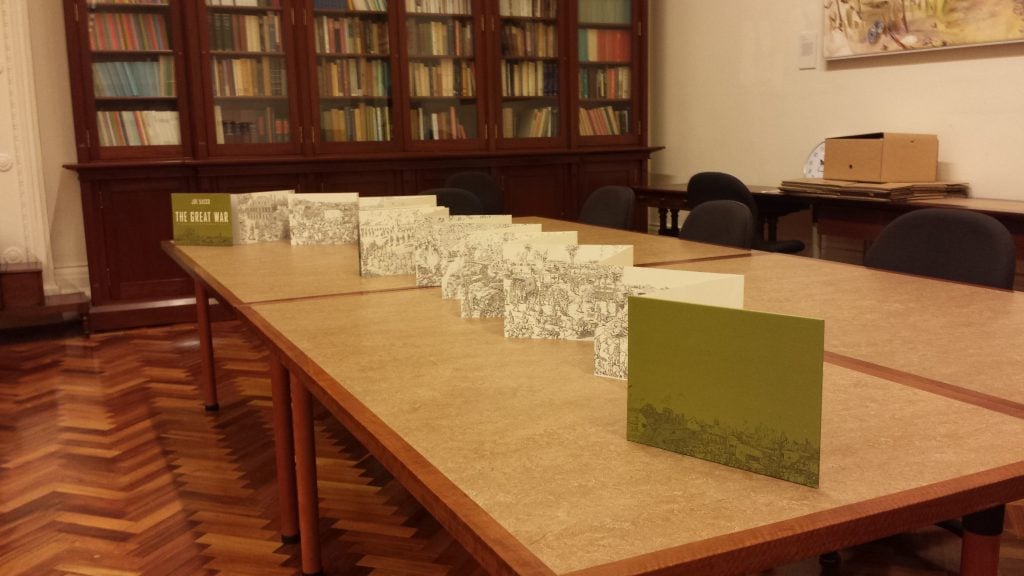
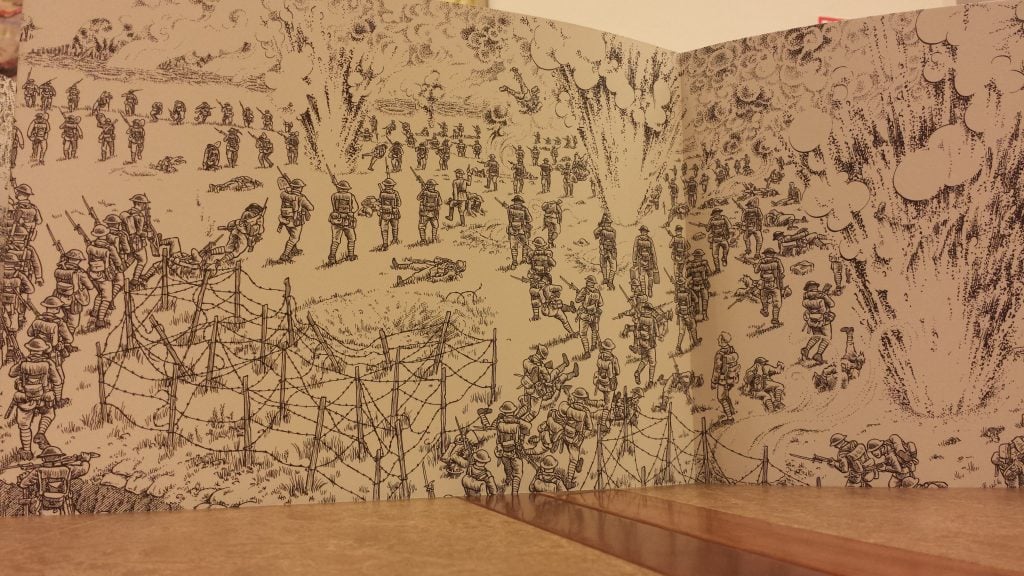
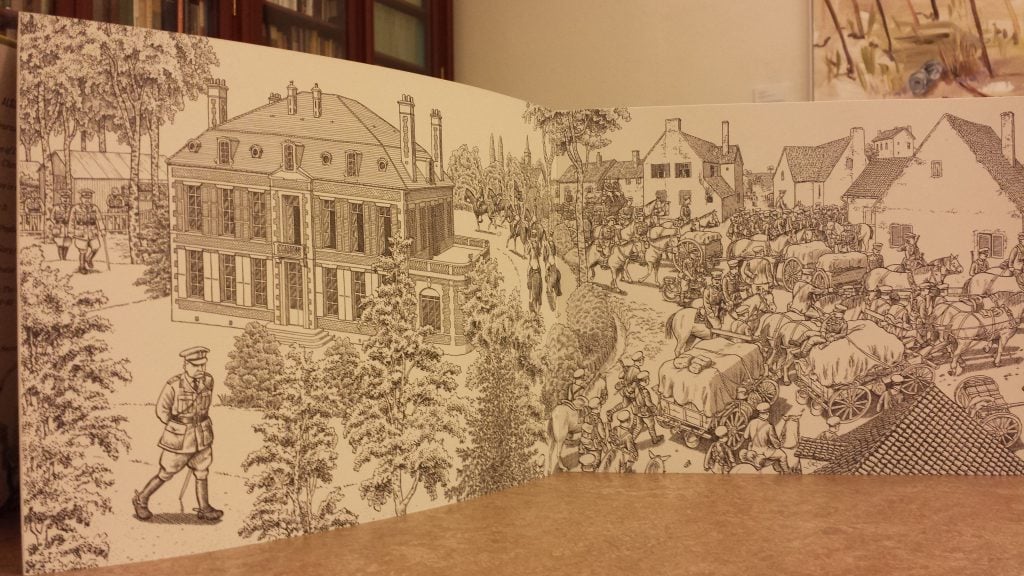
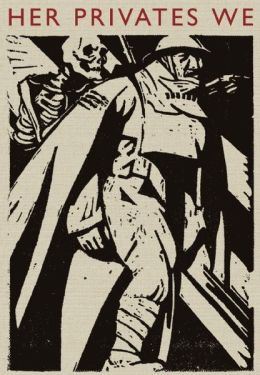

What a fascinating blogpost Michael. The images in Sacco’s book are quite extraordinary.